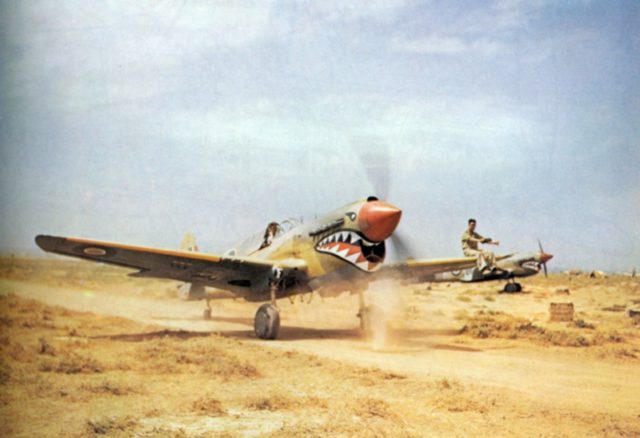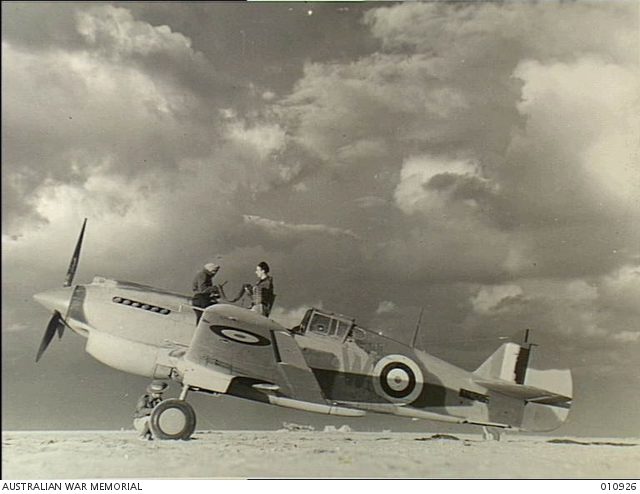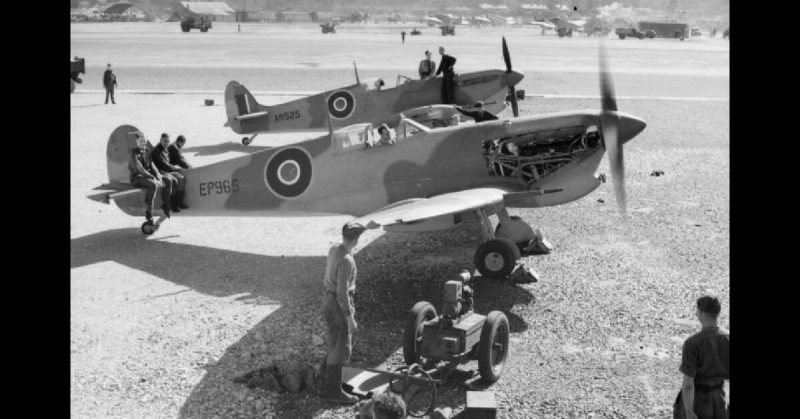During WWII, air power played a vital role on almost every front although when the American landings occurred in North Africa, that crucial element was downplayed. Why was the air war such a small part of the Operation Torch operation?
The American Planes
At the heart of the American contingent was the US Army Air Force’s 33rd Fighter Group. Originally they had been created to defend the American coastline from attack. However, the group was tasked with providing air cover for a more aggressive sort of war.
The 33rd were equipped with Curtiss P-40 Warhawks. A leading American fighter during the early war, the Warhawk was better than previous Curtiss models, due to its liquid-cooled Allison engine. Designed as a pursuit plane, it performed well at low to medium altitudes but not as a high flyer. The British, fighting against the finest planes Germany could throw at them, found the P-40 was not potent enough for use as an interceptor in the war over Europe.
Alongside the P-40s were some Grumman F4F Wildcats. They were tough, maneuverable fighters favored by the Navy. They provided a valuable asset near the coast, but would not be joining American forces stationed in Africa.
The Opposition
Facing the P-40 was the French Dewoitine D.520. Like the P-40, the D.520 first flew in October 1938. Technically, the two planes were evenly matched.

During the African landings, the Vichy French pilots had a home ground advantage and knew the region. They were using landing strips instead of aircraft carriers, and they were often closer to the action. They also had experienced pilots, who had fought the Luftwaffe during the invasion of France.
More unsettling was what would happen if the Germans became involved. The Messerschmitt range of fighters was rightly among the most feared and the best remembered of the war. They were the product of a nation with a proud engineering tradition who had been gearing up for war for nearly a decade. Once the fighting moved east, they outperformed the American planes.
The Carriers
The American expedition to North Africa was a secondary concern, both in resources and intentions. The US was already heavily committed to fighting in the Pacific. While the nation’s politicians and generals were keen to take on the Axis powers in Europe, they had hoped to go there directly, rather than intervening in Africa first.
The result was an expedition that lacked the carrier support of the Pacific fleets. Only one purpose-built aircraft carrier, the USS Ranger, was present in the American fleet. Four oil tankers – the Chenango, Santee, Suwanee, and Sangamon – had been hastily converted into carriers, through the addition of landing decks.
Tension Breaks
Given the vulnerable state of their air power, the Americans decided to avoid fighting in the air during the landings they launched on November 8, 1942. The aircraft were on standby, but would only be called upon if there was an emergency.
As ground forces went ashore, many of the pilots remained on board the carriers. They prepped and maintained their planes, waiting impatiently for the chance to take part. The Navy pilots from the Ranger took to the air, circling and waiting for the call to action. At 0625 it came.
At first, both sides used their planes for ground attacks. The Americans attacked French planes on the ground, destroying 28 spread across three different airfields. They then attacked the battleship, Jean Bart. The French strafed and bombed Americans soldiers as they landed on the beaches.
As the planes encountered each other in the air, dog fights broke out. In the largest, a group of Wildcats engaged with 16 French planes close to Casablanca. The Americans destroyed 8 enemy aircraft and lost 4 of their own. They then destroyed 14 more on the ground.

Bad Luck on the Santee
Planes from the Santee, covering a different stretch of coast, were sent on reconnaissance flights.
Almost immediately, there were problems. Five planes ran out of fuel and did not make it back to the carrier. One of them crashed into the sea, and the French captured the others. Another flight, also running short on fuel, tried to land at the small airfield at Safi. Most of the planes there were damaged and put out of action in the process.
The French Take to the Air
At first, the French pilots near the location of the Santee did not join the fighting. Many of the French preferred the idea of an American invasion rather than continuing in a dubious alliance between their Vichy government and Nazi Germany.
Then an aircraft from the Santee flew over a French airdrome at Marrakech. Anti-aircraft guns opened fire, and the pilot responded by dropping two bombs. The French pilots had no choice – the fighting had come to them.
Early on the morning of the 9th, French aircraft took off from Marrakech. They flew over American forces unloading at the coast. Cloud cover kept most of the French aircraft from attacking their targets, but they destroyed an American ammunition store.
The time had come for the 33rd Fighter Group to join the combat instead of doing reconnaissance. A squadron took off from the Santee and headed for Marrakech. There they attacked the airdrome, destroying 20 planes on the ground, and hit a convoy of French troops.
Moving In
By then, the invasion of that part of Africa was almost over. The French surrendered. American army planes flew in off their improvised carriers and occupied the airfields they had been attacking the day before. Soon they would head east to fight the Germans.
Theirs had been a small part in the landings, with some successes and some embarrassing failures. It was just a taste of what was to come.
Sources:
Francis Crosby (2010), The Complete Guide to Fighters & Bombers of the World
Orr Kelly (2002), Meeting the Fox: The Allied Invasion of Africa, from Operation Torch to Kasserine Pass to Victory in Tunisia
